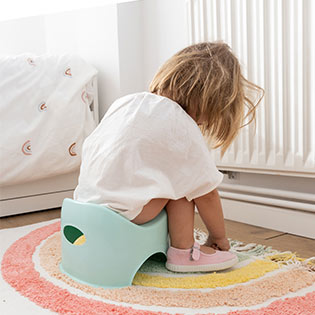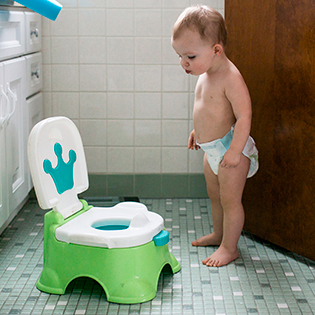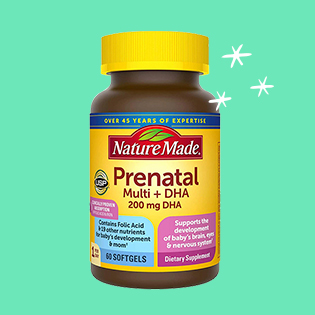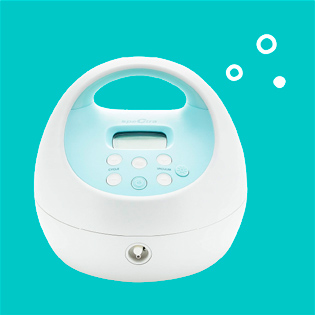When I was pregnant with my first child, I was shocked to learn there was only one birthing hospital and one OB/GYN practice near my home in Cheyenne, Wyoming. At first, this seemed unusual, but it didn't strike me as a problem. I started seeing an OB/GYN at a hospital located just 10 minutes away. But during my third trimester, my son developed a kidney condition called hydronephrosis. To see a specialist, I'd need to drive more than 100 miles each way to Denver.
The next week, my husband and I made the 90-minute trip. I was roughly 37 weeks pregnant at the time, and the care team wanted us to stay in town in case I went into labor; my son might need surgery as soon as he arrived.
I panicked as we scrambled to find a place to stay, worrying about my son and whether my husband would need to return to Cheyenne for work. Looking back, I wonder what would have happened if we didn't have a way to get to Denver, or if we hadn't gotten any time off at all.
I'm not alone — and many women are worse off than I was. More than 2 million women of childbearing age live in areas that are considered maternity care deserts, per a 2022 March of Dimes report. These areas have even less access to maternity care than I had, as maternity care deserts are counties with no obstetric care at all.
If you live far away from prenatal care, you can still have a safe and healthy pregnancy. Here’s what you need to know.
What is a maternity care desert?
Maternity care deserts are counties across the U.S. that don't have a hospital or birth center offering obstetric care or any obstetric providers, per the March of Dimes.[1] More than 1,000 counties in the U.S meet this definition, and more than 2 million women of childbearing age live in these counties.
Read This Next
While Cheyenne, Wyoming, isn’t technically a maternity care desert, it’s a good example of a location that is still underserved; as the March of Dimes reports, another 3.5 million women of childbearing age live in counties with limited access to maternity care.
A number of factors can cause maternity care deserts., including budget cuts and provider shortages.[2]
Most maternity care deserts (61.5%) are in rural places like Arkansas, where nearly half of the counties are maternity care deserts, or North Dakota, which has the highest proportion of counties designated as maternity care deserts in the nation.[3]
However, urban areas struggle with these issues as well. For example, New Jersey's capital city, Trenton, is a maternity care desert without a single birth center or maternity hospital in the city.
How living in a maternity care desert impacts pregnancy outcomes
Being pregnant in a place with limited access to prenatal care can be incredibly stressful, both mentally and physically, says Nicole Calloway Rankins, M.D., M.P.H., an OB/GYN practicing in Richmond, Virginia. "It could also be dangerous if there are no resources to manage someone's specific needs," she says. For example, if a pregnant woman in a maternity care desert has diabetes or high blood pressure, the limited resources there can make it tougher to get the more specialized care she needs.
People who live in maternity care deserts are often battling layered challenges, too. They're more likely to be poor, have chronic conditions like hypertension or asthma, and live in an area with considerable abortion restrictions and limited telehealth access.[4]
The majority of women who live in maternity care deserts are non-Hispanic white, but 1 in 4 Native American babies are born in areas of limited or no access to maternity care, as are 1 in 6 Black babies. Black, Indigenous and other women of color face the highest risks for maternal death and mistreatment during pregnancy, further compounding the harm of limited care options.[5][6]
What to do if you live in a maternity care desert
Maternity care deserts are a systemic issue. It shouldn't be this way, and there is literally nothing one single mom can do to "fix" this. That said, there are things you can do to feel more prepared and confident about your pregnancy, wherever you're located.
Take a childbirth class
"When you have limited options, it's critical to educate yourself," Dr. Calloway Rankins says. "Despite the challenges, having a great [pregnancy and birth] experience is still possible."
Taking an in-person or virtual class on pregnancy, labor and delivery can help you figure out your preferences and potentially draw up a birth plan, if you want one.[7] There are many remote options for childbirth education — such as podcasts, online videos, courses and apps — that can help you prepare.[8]
Taking an expert-led class gives you a chance to ask a childbirth educator personalized questions, learn new things you may not have known to ask, and connect with a community of people in a similar stage. You can find in-person and online programs through the HypnoBirthing Institute, Lamaze International class or the labor and delivery department at your local hospital.[9] For Black women, exploring the Every Mother Counts Black Maternal Health Resource list can supplement your education and prepare you to navigate bias and discrimination.
Know the red flags
You'll also want to learn the urgent maternal warning signs that can signal a life-threatening prenatal or postpartum condition so you can advocate for yourself and let your provider know right away if you experience one. Here's what to look for, according to the Centers for Disease Control and Prevention:[10]
- A headache that won't go away or gets worse over time
- Dizziness or fainting
- Changes in your vision
- Fever of 100.4 degrees Fahrenheit or higher
- Extreme swelling of your hands or face
- Thoughts of harming yourself or your baby
- Trouble breathing
- Chest pain or a fast-beating heart
- Severe nausea or vomiting
- Severe belly pain that doesn't go away
- A stopping or slowing of fetal movement during pregnancy
- Severe swelling, redness or pain in your arm or leg
- Vaginal bleeding or fluid leaking during pregnancy
- Heavy vaginal bleeding or discharge after pregnancy
- Overwhelming fatigue
If you experience one of these symptoms (even if you're unsure if it's serious), seek medical care right away.
Research the providers in your area
Checking with your insurer (or your Medicaid or CHIP program) to learn about nearby in-network providers is a good first step.[11] Try calling your insurer or checking its online directory. Afterward, you can make an appointment to view the facility and interview the providers (or, potentially, a group of providers) to see if they answer your concerns.[12]
"Understand who the prenatal care providers are [in your area] and how they approach birth to ensure they support your priorities," Dr. Calloway Rankins says. "If they don't, you'll need to be ready to advocate for yourself or find other options."
A good provider is one who makes you feel heard and who you believe will respect your needs and concerns throughout pregnancy and postpartum care. Before you schedule an appointment, write down a list of questions to ensure they can offer the care you need. Ones like the following are a good start:[13]
- How much do you know about the risk Black people face during birth?
- Are you willing to listen to me? How do you handle disagreements or different views with patients?
- What can I expect from your care?
The American College of Obstetricians and Gynecologists also recommends asking friends and family for provider suggestions. You can also consult the following resources:
- Irth, a Yelp-like review app that helps Black and brown expectant parents see provider reviews
- Health in Her Hue's provider directory
- LGBTQ+ Healthcare Directory
- Sista Midwife Productions' Black birth worker directory
PSA: Your provider doesn't need to have the same exact background as you in order to provide culturally competent care, says Oluwatosin Goje, M.D., an OB/GYN at the Cleveland Clinic and member of the What to Expect Medical Review Board.
Consider hiring a doula
Doulas are trained, nonmedical professionals who can help ensure your concerns are respected before, during and after pregnancy.[14] They can communicate with your provider on your behalf, provide physical support like pain relief and offer postpartum services after birth.
While a doula obviously can't stand in for the lack of other resources, working with one can have a lot of benefits. Moms who use a doula are two times less likely to experience pregnancy complications.[15] (Here's how to make working with a doula more affordable.)
Explore virtual and outreach care options
Telehealth can help bridge gaps and bring peace of mind if you're living in an area with limited options, Dr. Calloway Rankins says. Try calling your nearest hospital and asking about providers who offer teleservices.
Additionally, many Planned Parenthood health centers offer some virtual prenatal care services. The March of Dimes also sponsors Baby Live Advice, a low-cost maternity and infant telehealth resource that connects families with experienced maternal-child nurses, nurse practitioners, midwives, lactation consultants and nutritionists. Anyone can sign up for these resources online.
Outreach clinics and mobile clinics are another option. Specialists will visit outreach clinics — which are often located in rural areas — to provide care closer to patients' homes.[16] Mobile clinics bring preconception, pregnancy, postpartum and newborn interventions (and preventative care) to the neighborhoods they visit.[17] Check these websites and call one of the regional information numbers to see if your community has access to on of the following:
- March of Dimes Mom and Baby Mobile Health Centers in Arizona, New York, Ohio and Washington D.C.
- St. Joseph's Maternity Outreach Mobile Unit (MOMobile) in Arizona
- MOM Mobile in Florida
- Mothers of Gynecology Wellness Pod in Alabama
Speak up for yourself
Advocating for yourself and your community are important yet often overlooked elements of improving maternal health outcomes, Charley-Sibley notes. There are many ways to speak up, whether it's with your doctor or with your political representatives.
When speaking up for yourself in medical settings:
- Write down a list of your concerns beforehand.[18]
- Know your needs are valid; be honest about why you're worried or concerned.[19]
- Bring a loved one or support person (like a doula) to your appointment to ensure your needs are understood.
When using your voice for political advocacy:
- Write or call your Congressional representatives and voice your support for maternal care legislation like paid parental leave.[20] (Find who represents you on USA.gov.)
- Attend local government meetings, like town halls, and speak about the importance of maternal health resources.
- Consider volunteering with maternal health care advocacy organizations.[21]












































 Trending On What to Expect
Trending On What to Expect





